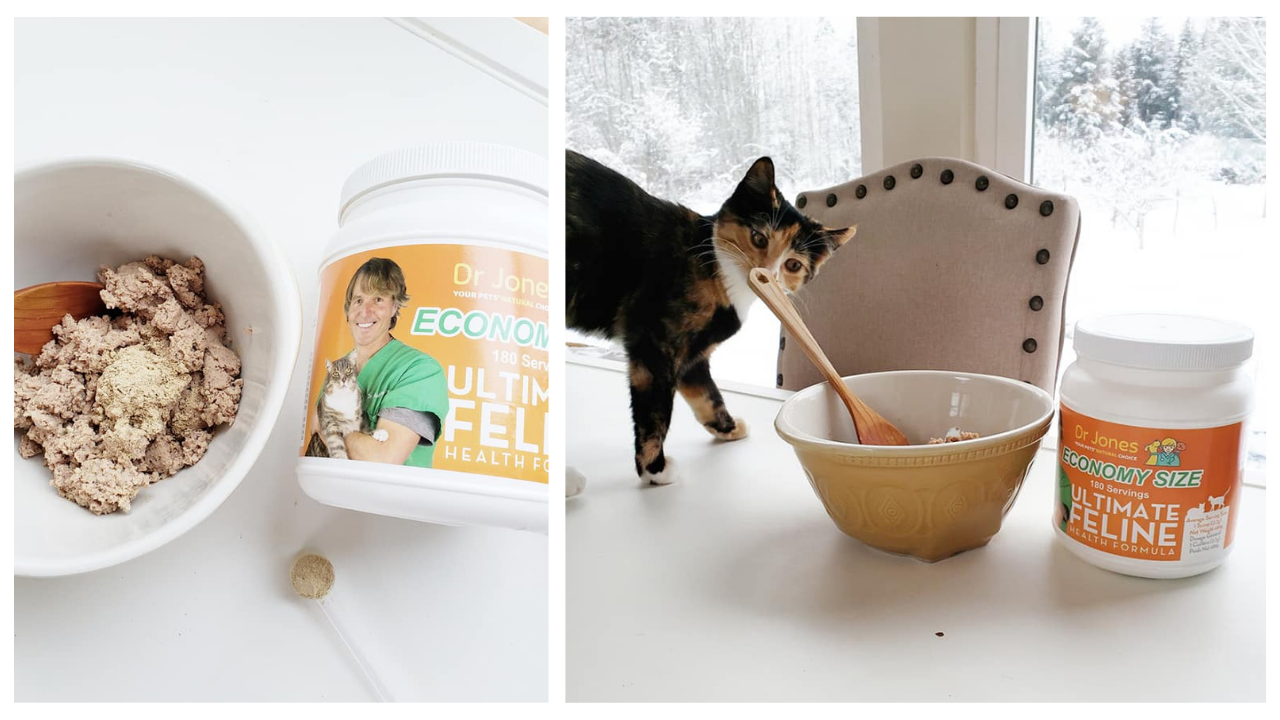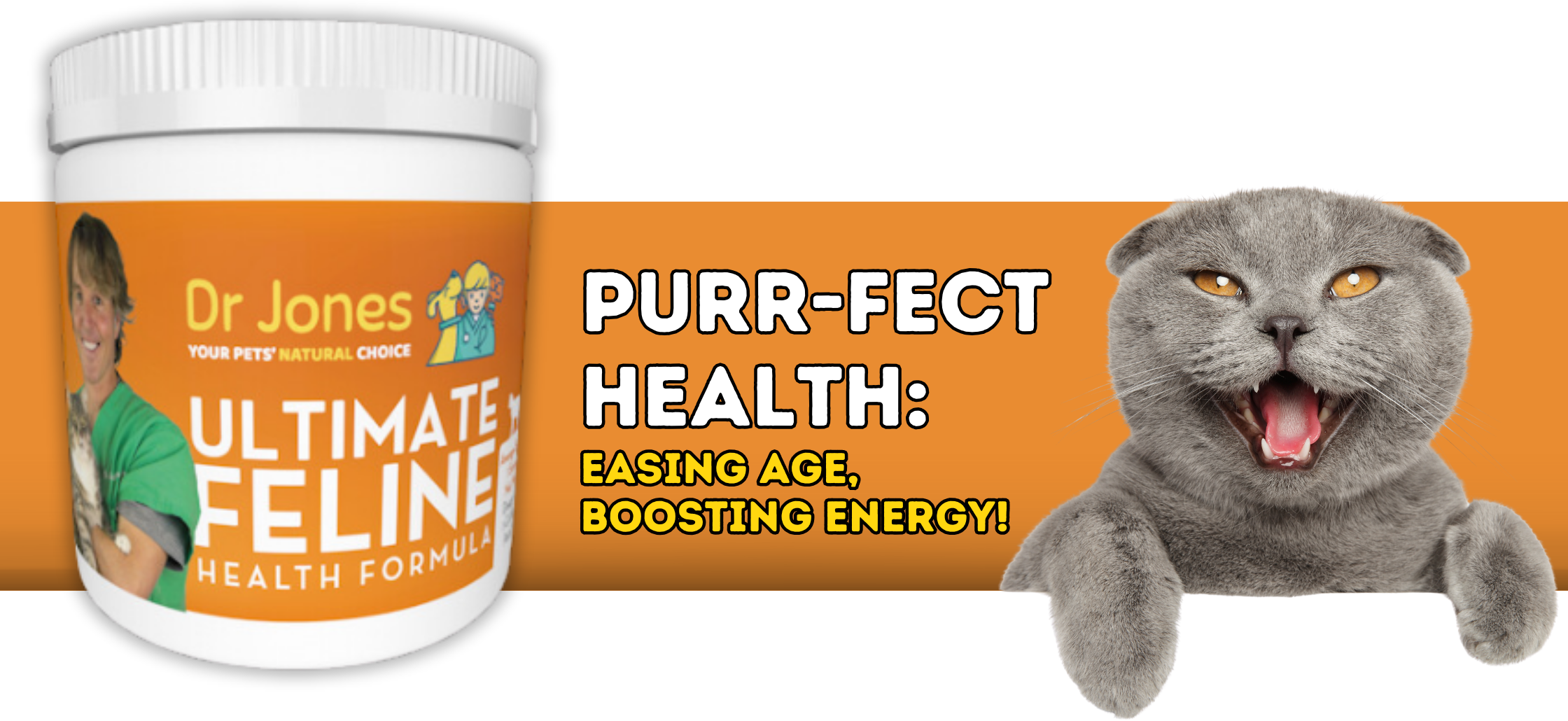Why Vet Bills Are Skyrocketing in 2025 and How Pet Parents Can Save
![]()
Try Dr. Jones’ Ultimate Canine Advanced Plus Health Formula for Dogs
If you’re serious about giving your dog the best care possible, check out Dr. Jones’ Ultimate Canine Advanced Plus Health Formula. This all-in-one supplement is packed with vitamins, minerals, and antioxidants designed to support your dog’s digestive health, immune system, joints, and skin. It helps improve mobility, maintain energy, and boost overall vitality—perfect for dogs of all ages, from playful pups to senior companions. With consistent use, you’ll notice a happier, healthier, and more energetic dog ready to enjoy every day by your side.


Try Dr. Jones’ Ultimate Feline Health Formula for Cats
Cats are natural athletes with unique dietary needs, and their health relies on a balanced blend of nutrients. Dr. Jones’ Ultimate Feline Health Formula is crafted specifically for cats to support their delicate digestive system, strengthen immunity, promote healthy skin and coat, and maintain lean muscle mass. With essential vitamins, antioxidants, and fatty acids, it helps your cat stay active, playful, and resilient, while also supporting long-term wellness. It’s the perfect daily boost to keep your feline friend feeling their absolute best.

Why Are Vet Bills So High in 2025? Hidden Costs & How to Lower Them
Veterinary fees have skyrocketed, and a recent report shows millions of pet parents are avoiding taking their pets to the veterinarian—even when care is needed—simply because they can’t afford it. Should you consider pet insurance? Are there things you can do at home? Is pet insurance even worth it? I’m going to share all this and more, along with tips to help you care for your pets without breaking the bank.
If you’re looking for natural pet health and wellness tips, you’ve come to the right place.
The Rising Cost of Pet Care
A Gallup poll looked at the veterinary habits of pet owners and the barriers many face. The findings were eye-opening:
-
Annual cost of pet care: $2,000–$5,000 per year for the average dog or cat, including food and basic veterinary care.
-
Lifetime cost of ownership: $20,000–$60,000.
That’s a lot, right? Even if your pet is worth every cent, what if you’re struggling just to feed your family? Suddenly, dental cleanings, extractions, or emergency care can feel impossible to afford.
Call-in shows highlight this struggle. One pet parent spent $40,000 in 18 months:
-
ACL surgery for a dog: $9,000
-
Dog hospitalized for pancreatitis: $10,000
-
Cat with fatty liver disease: $15,000
Many had to refinance homes or take out second mortgages to cover these bills. And it’s not just a rare case—this is happening across the country.
Why Have Vet Bills Escalated?
Veterinary care costs have risen for several reasons:
1. Rising Practice Costs
Running a clinic is expensive. Labor-intensive work, big buildings, and costly equipment all add up. On top of that, pets are more a part of the family than ever, and expectations from pet parents are higher:
-
Monitored anesthesia
-
Pre-surgical blood work
-
Minimizing complications
-
Fast recovery
2. Salaries and Support Staff
Veterinarians and support staff now earn fairer wages than 15 years ago. Clinics need to cover salaries, benefits, and training costs.
3. Corporate Ownership
In Canada, 25–30% of general practices and over 50% of specialty practices are now corporate-owned. Shareholder expectations drive higher fees to maximize profit. While this ensures fair pay for staff, it often makes veterinary care less affordable for pet parents.
Dental Care: A Case Study
Ten years ago, a dental cleaning with multiple extractions rarely exceeded $500. Today, a similar procedure can cost $3,000–$5,000. While rising costs are partly justified, a tenfold increase seems extreme, especially for families on a budget.
Solutions: How You Can Manage Costs
Even with high fees, there are practical steps to care for your pets without breaking the bank:
1. Find a Local Independent Vet
If possible, choose a non-corporate clinic. Independent practices often have more flexibility with payment plans or discounts.
2. Consider Pet Insurance
Only about 10% of North Americans have pet insurance—but it can provide peace of mind:
-
Premiums: ~$50/month for a young, healthy pet
-
Deductibles: $0–$1,000 (lower deductible = higher premium)
-
Co-pays: ~20%
Pet insurance helps cover emergency surgeries, hospitalizations, and other high-cost treatments. While you may pay out-of-pocket first, reimbursement offers financial relief during stressful situations.

Recommended options (no affiliate links):
3. Use Home Remedies Where Appropriate
Many common conditions can be safely addressed at home with inexpensive solutions:
-
Dental care: Propolis spray can reduce gingivitis
-
Allergies: Over-the-counter antihistamines for acute reactions
-
Ear infections: Canistin
-
Wounds: Vaseline or topical black tea
-
Hairballs in cats or hotspots in dogs: Simple home treatments
Learning basic at-home pet care can save money while keeping your pets healthy. Start with simple procedures like examining your dog or cat, administering fluids if dehydrated, or managing mild vomiting.
Final Thoughts
Rising veterinary fees are real, but you have options:
-
Build a strong relationship with an independent vet.
-
Consider pet insurance, especially for young pets.
-
Use safe, effective home remedies to handle minor issues.
By taking these steps, you can save money, protect your pet’s health, and feel empowered as a pet parent.
Click to Get A Free Copy of My E-Book!




















